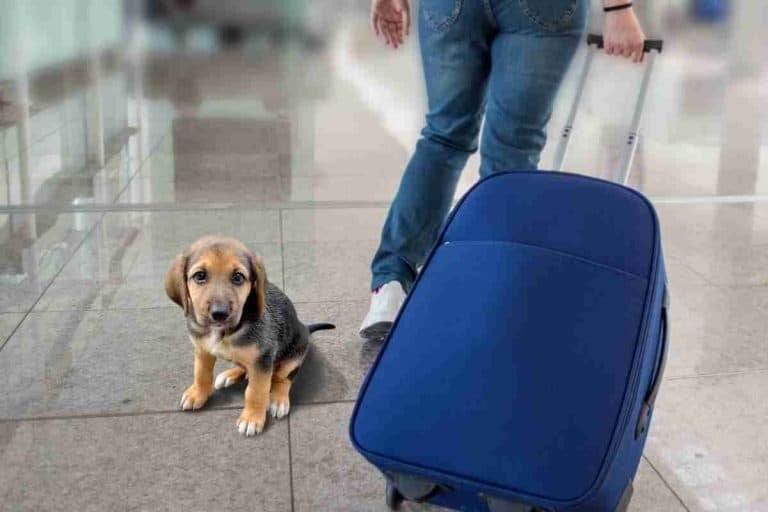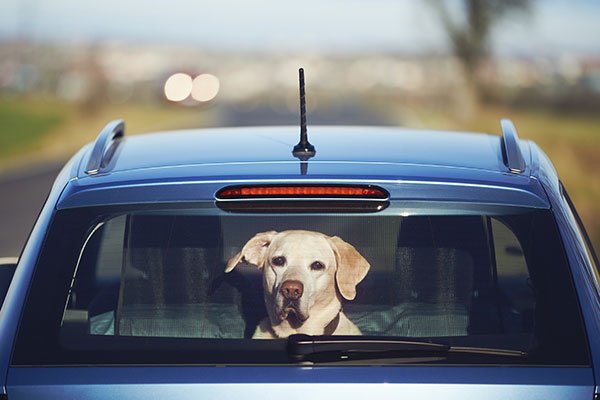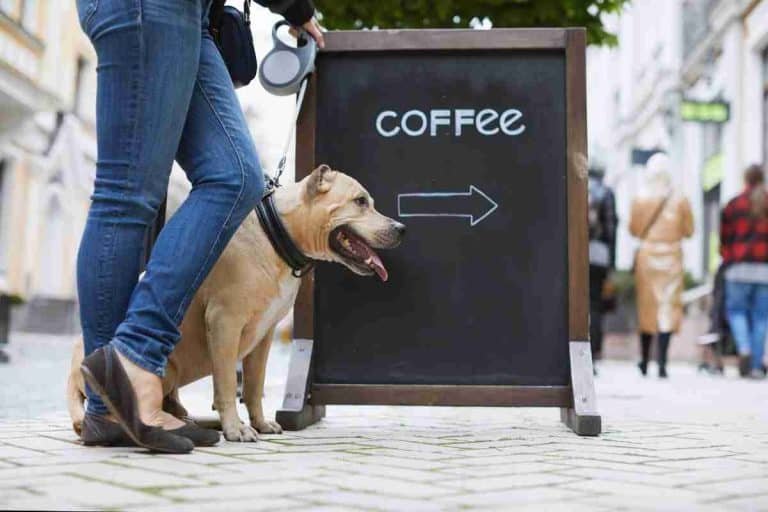8 Reasons Your Dog Is Refusing to Get Into the Car (and What to Do)
Last Updated on October 10, 2025
When a dog refuses to get into the car, it isn’t stubbornness—it’s a signal. 8 Reasons Your Dog Is Refusing to Get Into the Car (and What to Do) pinpoints likely causes such as motion sickness, anxiety, past negative associations, pain, physical limitations, and multi‑pet conflict. Owners get clear signs to watch for and immediate, low‑pressure steps to try. The guide also flags red‑alert symptoms that warrant a vet exam, including vestibular issues, sudden limping, or persistent vomiting.
Readers can expect a quick assessment checklist, a step‑by‑step desensitization and counterconditioning plan, and fast, safe loading tactics. It also compares gear—ramps, non‑slip mats, crates, harness seatbelts, and booster seats—and explains how to manage nausea with ventilation, feeding timing, and vetted medications. Finish with relapse‑prevention routines and when to call a certified behaviorist, so car travel becomes calm, reliable, and safe.
8 likely reasons your dog refuses to get into the car
The list below names common causes and points owners to practical fixes. Each entry explains a specific trigger, what to watch for, and an immediate step to try. For general preparation and gear that makes rides safer and less stressful, consult essential dog travel tips and gear for road trips. Use short, consistent training sessions and reward-based approaches. If resistance persists or if physical signs appear, book a vet check before escalating training. A tailored plan usually combines medical assessment, gradual desensitization, and vehicle adjustments.
Motion sickness or balance problems — signs to watch for
Dogs with motion sickness may drool, yawn repeatedly, appear restless, or vomit shortly after entering the car. Puppies and brachycephalic breeds show symptoms more often. Start by exposing the dog to an idling car, then progress to short drives around the block. Offer low-fat snacks and avoid heavy meals before travel. For chronic cases, consult tips in how to make car rides enjoyable for your motion-sick pup for calming techniques and vet-recommended motion remedies. Always rule out vestibular or inner-ear issues with a veterinarian.
Past negative associations (vet, groomer, loud events)
A dog that links cars with painful or frightening visits will resist entering. Signs include freezing at the door, trembling, or retreating. Break the association by creating positive, neutral car experiences: feed meals by the open door, reward calm steps into the vehicle, and end sessions with a pleasant walk rather than a vet visit. If accidents or loud events caused the fear, proceed slowly and pair every approach with high-value treats. Owners can learn more about behavior cues and calming on drives from why dogs cry in the car.
Fear or general anxiety about confined spaces or movement
Claustrophobic reactions appear as panting, pacing, or frantic attempts to escape. For dogs with travel anxiety, apply systematic desensitization: start with the dog sitting in the parked car with the door open, reinforce calm behavior, then add brief engine time and short drives. Consider calming aids, pheromone sprays, or a consult with a behaviorist. Practical, natural strategies also help reduce anxiety—see 9 natural ways to remedy your dog’s travel anxiety for options that pair well with training.
Pain or physical discomfort made worse by travel
Arthritis, hip dysplasia, inner-ear inflammation, and pregnancy can make movement painful. A dog may reluctantly approach the car or lie down instead of climbing in. Observe stiffness, reluctance on stairs, or limping. Modify the vehicle with a ramp or low-entry access and add padded bedding. Always consult a veterinarian to diagnose pain and discuss anti-inflammatories or joint supplements. Guidance for transporting dogs with special physical needs appears in can a pregnant dog travel by car.
Over-excitement or separation-of-control behaviors
Some dogs refuse to enter because they anticipate an exciting event and become dysregulated. Others resist when they want to control access to a favored person or place. Signs include spinning, loud barking, or grabbing at leashes. Channel that energy with a calm routine: a leash-on cue, a settle command, and a reward only after the dog enters calmly. Use short pre-drive exercises to expend excess energy. For related vocalization issues and strategies to reduce noise and agitation during travel, see dog whining on plane.
Territorial or resource-guarding issues with other pets
Guarding often surfaces when multiple pets share a vehicle. A dog may block the ramp, growl at others, or refuse to enter a shared space. Separate pets during loading using crates or partitions. Teach each dog a reliable loading cue and reward individually. Secure crates to prevent movement and reduce competition for space. For practical ways to restrain and separate dogs safely while traveling, review 5 ways to secure a dog crate in car.
Lack of experience or poor early socialization with cars
Dogs with minimal exposure to vehicles often show fear or confusion rather than active fear. Puppies benefit most from positive, repeated exposure. Begin with short, reward-based car sessions, gradually increasing time and distance. Pair car rides with pleasant outcomes like park visits, not only vet trips. For methods to transport young dogs safely without relying solely on crates, consult how to transport a puppy in a car without a crate.
Physical limitations (age, breed, mobility) and accessibility
Seniors and large breeds often struggle with height and joint pain. Breed traits like short legs or long backs also affect car entry. Add ramps, non-slip mats, and lower the step height where possible. Teach dogs to use these aids with treats and short repetitions. For safe handling and lifting techniques with large or immobile dogs, follow the step-by-step guidance in 5 steps to safely lift a large dog into a car. If mobility issues worsen, schedule a veterinary mobility assessment and ask about assistive devices.
How to quickly assess what’s behind the refusal
When a dog suddenly refuses to get into the car, owners should perform a quick, structured assessment to narrow causes. Start by observing behavior from a distance. Note posture, breathing, vocalization, and whether the dog approaches the vehicle and stops or actively avoids it. Check recent changes: new routes, loud sounds near the car, recent veterinary procedures, or medications. Consider age-related factors; senior dogs commonly develop arthritis or vestibular issues that change their willingness to move.
Next, inspect the vehicle and entry points. Sharp smells, damp seats, loose floor mats, or unfamiliar carriers can trigger avoidance. Test the door and ramp for loose parts or pinch points. Record when the refusal started and any events that coincided with it—this timeline helps separate learned fear from sudden pain.
If the dog shows obvious distress, visible injury, or neurological signs, arrange veterinary attention immediately. For owners preparing rides, a useful resource on practical travel prep is essential dog travel tips and gear, which covers gear choices that reduce stress and physical barriers.
Simple home checks to rule out injury or sudden pain
Before concluding behavior is a fear response, rule out injury with calm, hands-on checks. Approach the dog calmly and speak softly. Watch for flinching, growling, or sudden withdrawal; these signs suggest pain. Check limbs and joints by gently flexing each joint and watching facial expressions for discomfort. Palpate the spine and hips for heat, swelling, or abnormal gaps.
Inspect paws and pads for cuts, foreign bodies, or torn nails. Lift lips to check teeth and gums; oral pain can cause avoidance when lifting into a car. Check the abdomen for bloating or tenderness; do not press hard if the dog reacts strongly. For larger dogs that resist being lifted, follow safe handling steps—owners should review demonstrated techniques from a guide like 5 steps to safely lift a large dog into a car rather than improvising risky moves.
If any check causes consistent pain or the dog cannot bear weight, contact a veterinarian. Use a calm voice, keep movements slow, and avoid forcing the dog into the vehicle.
Distinguishing motion sickness from anxiety or excitement
Recognizing whether a dog resists car travel due to motion sickness, anxiety, or overstimulation guides effective fixes. Motion sickness typically produces drooling, lip licking, yawning, pale gums, whining, restlessness followed by vomiting, or lethargy after short rides. Anxiety shows as trembling, pacing, vocalizing, attempts to escape the vehicle, and a fixed gaze. Excitement includes wagging, jumping, and vocalizations combined with a playful attitude.
Use controlled tests: place the dog in a parked car for short sessions. If signs appear only during motion, motion sickness is likely. If signs appear in a stationary car, anxiety or fear of the environment is more probable. Conditioning steps differ: gradual desensitization and counter‑conditioning for fear; short, frequent, low‑motion rides and antiemetic strategies for sickness. For practical calming techniques and motion‑sickness strategies, consult the guide no-more-doggie-dramas: how to make car rides enjoyable for your motion-sick pup.
When introducing treatments, try brief practice sessions and reward calm behavior. If symptoms persist, seek veterinary advice on medication or behavior‑modification plans.
When a vet exam, vestibular workup, or X‑ray is needed
Certain signs require immediate veterinary diagnostics rather than home troubleshooting. Urgent red flags include sudden collapse, inability to stand, severe or worsening pain, head tilt, circling, nystagmus (rapid eye movements), and persistent vomiting. These signs can indicate vestibular disease, neurologic injury, or systemic illness that makes car travel unsafe.
At the clinic, a veterinarian performs a focused physical and neurologic exam. They may recommend bloodwork, ear exams, X‑rays, or advanced imaging such as CT or MRI for suspected inner‑ear or brain issues. A vestibular workup often includes otoscopic inspection and, when appropriate, imaging to rule out middle‑ or inner‑ear infections, tumors, or stroke. Behavior changes that persist without clear cause also warrant a professional assessment; see related discussion on behavior change in why a dog stops playing.
Owners should describe the onset, progression, and any prior incidents. Prompt diagnostics speed treatment and reduce the risk of forcing a painful or unsafe trip. When in doubt, arrange a veterinary visit rather than risking further harm.
A step-by-step training plan (desensitization + counterconditioning)
The plan breaks the car into tiny, nonthreatening steps and pairs each step with rewards. Sessions should last five to ten minutes and occur several times daily. Track progress in a notebook. If the dog shows stress, step back to the last comfortable level and repeat until calmness becomes consistent.
Establish a “safe distance” and pair the car with high‑value rewards
Begin where the dog notices the car but remains relaxed. From that safe distance, drop high‑value treats or offer a favorite chew. Reward every calm glance, then every voluntary approach. Reduce distance only after several calm sessions. Use small, moist treats that the dog rarely gets.
Stationary car exercises: open doors, feeding, play, two‑paw steps
Work with a stationary car parked in a quiet spot. Open a door and toss treats inside. Feed an entire meal just outside or at the threshold. Encourage two‑paw steps onto the sill, then reward and retreat. Add a short play session inside the open doorway. These steps teach the car equals good things.
Progress to engine sounds, short drives, and calm exit routines
Introduce engine noise before moving. Start the engine while doors stay open, reward calm minutes, then shut a door briefly. Move to ten‑second pulls, then one‑minute laps. Keep exits calm; avoid overstimulation when arriving. For dogs prone to motion sickness, consult resources on how to make car rides enjoyable for your motion‑sick pup.
Reinforce calm behavior and fade treats to maintain progress
Reward calm entries and waiting, then slowly reduce treat frequency. Replace every third treat with praise, then every fifth. Add a simple cue like “let’s go” tied to calm behavior. Use random reinforcement to keep reliability. If progress stalls after two weeks, consult a certified trainer or veterinarian for targeted help.
Immediate tactics to get a stubborn dog into the car safely
Owners need quick, safe methods that reduce stress and avoid escalation. Break the task into micro-steps: approach the vehicle, reward at the door, reward one paw on the threshold, then reward when all four are inside. Keep sessions short and repeatable. Use high-value rewards and a calm voice. Never rush or force a fearful dog; forcing creates stronger avoidance. If the dog resists because of motion sickness, brief practice rides around the block can help; address vomiting or whining separately in training and veterinary care.
Low‑pressure lures, ramps, step stools and correct lifting technique
Use target training or a trail of treats to guide a dog inside. For senior or short-legged dogs, add a ramp or sturdy step stool with a non-slip surface and gentle incline. Measure the ramp so it doesn’t exceed a shallow angle; test its wobble before use. When lifting a large dog, use the recommended body mechanics and team lifts to avoid injury. For guidance on safe lifts and proper technique, see 5 steps to safely lift a large dog into a car.
Use of temporary calming tools: pheromones, Thundershirt, music
Temporary calming tools reduce arousal during loading. Apply canine pheromone sprays or diffusers near entry points about 15 minutes before use. A snug Thundershirt can lower anxiety for many dogs. Play low-frequency classical or specially curated canine calming playlists during training. Use tools as an aid to training, not a permanent fix. If medication seems necessary, owners should consult a veterinarian before dosing.
Managing multiple dogs or competition at the car
Address resource competition by loading dogs one at a time. Have one handler per dog when possible. Use crates or harnesses to separate eager dogs and prevent pushing at the doorway. Teach a consistent entry order and reward the dog that waits calmly. For multi-dog households, practice single-dog loading sessions to build individual confidence before combining dogs for travel.
Tackling motion sickness and nausea specifically
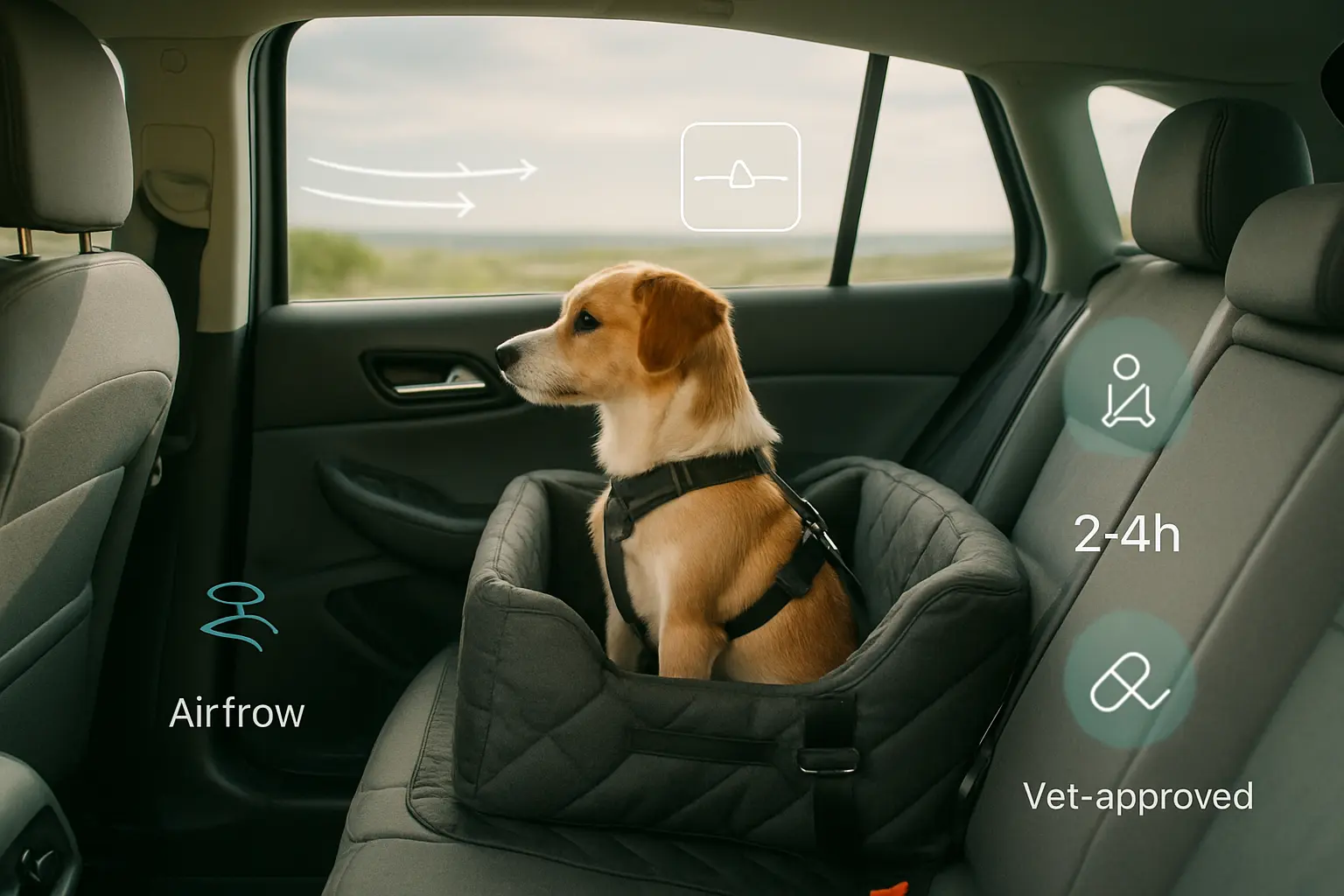
Motion sickness ranks among the most common reasons a dog refuses to get into the car. Owners should identify signs such as drooling, lip licking, whining, restlessness, or vomiting within minutes of travel. Addressing motion sickness requires a layered approach that combines environment, feeding, and veterinary support. For practical tips on making rides more comfortable for a motion‑sick pup, see tips to make car rides enjoyable for motion‑sick pups.
Start with short, frequent conditioning trips to build tolerance. Pair every small success with a reward to create a positive association. If symptoms persist despite behavioral work, consult a veterinarian about medical options before attempting longer trips.
Environmental changes: ventilation, view, and seating position
Optimize the car cabin. Increase ventilation and keep windows slightly open to stabilize motion cues. Position the dog where it sees the horizon—booster seats or a forward‑facing crate help. Lower the dog’s vertical motion by placing a crate on the vehicle floor or using a non‑slip mat on a bench. Dim harsh sunlight with a sunshade and remove reflective surfaces that amplify perceived movement. Secure the dog so it feels steady rather than bouncing around; a well‑fitted harness or crate does this without restricting breathing.
Diet and timing: avoid feeding before travel; safe chews during trips
Avoid feeding two to four hours before travel to reduce the chance of vomiting. Offer small amounts of water up to travel time and restrict large meals. For dogs that need distraction, offer safe, slow‑digesting chews or long‑lasting toys; freeze‑dried treats or a stuffed KONG can occupy a nervous dog without upsetting the stomach. Ginger can help some dogs; discuss dosage with a veterinarian. Test any pre‑trip snack on a quiet day to confirm it won’t provoke nausea.
Veterinary options: antihistamines, anti‑emetics, or short‑term meds
A veterinarian can prescribe evidence‑based drugs for motion sickness. Maropitant (Cerenia) works well as a short‑term anti‑emetic for travel. Metoclopramide or ondansetron address nausea in specific cases. Antihistamines like diphenhydramine or meclizine sometimes reduce vestibular symptoms but vary by dog. Discuss dosing, timing, and side effects before use. Often medications work best combined with gradual desensitization and environmental adjustments. Schedule a vet trial dose before a long trip to confirm effectiveness and safety.
Equipment and setup that make loading and travel easier
Owners consulting 8 Reasons Your Dog Is Refusing to Get Into the Car (and What to Do) often find that the right equipment removes a major barrier to entry. A deliberate setup reduces fear, physical strain, and unpredictability. Start by creating a consistent pathway to the vehicle: park where the dog usually enters, open doors gradually, and keep the same commands and rewards. Use visible cues—a mat or toy at the threshold—so the dog associates the car with familiar items.
Investing in purpose-built gear speeds progress. Lightweight ramps and telescoping steps shorten training time for senior or large dogs. Non‑slip mats on the floor and boot protectors for paws prevent slips and sudden recoils. Secure anchor points in the trunk or back seat eliminate sliding that frightens many dogs during stops. For a compact checklist and packing ideas, consult essential dog travel tips and gear for road trips.
Set up incrementally: stage the ramp or steps next to the car, reward voluntary sniffing, then reward each paw placement. Keep sessions short and upbeat. Re-evaluate after a few trips and adjust equipment if the dog avoids certain surfaces or positions.
Choosing ramps, portable steps, and non‑slip mats
Ramps and steps reduce the physical and psychological obstacles to entering a vehicle. Choose based on the dog’s size, mobility, and confidence. Ramps work best for dogs with joint issues or long bodies. Portable steps suit dogs that prefer a stable platform to step onto. Test weight ratings and surface grip before purchase.
Measure the vehicle sill height and calculate ramp slope. A gentler incline reduces fear and strain. For active dogs, look for textured surfaces and side rails to guide movement. Non‑slip mats should cover the loading surface and the first step inside the car. Secure mats with adhesive or Velcro so they do not bunch under paw pressure.
Practice use outside the car on grass or carpet first, then move to the vehicle. Pair each successful approach with high‑value treats and a release cue. For techniques on safely lifting or assisting large dogs when a ramp isn’t available, see 5 steps to safely lift a large dog into a car.
Crates vs harness seatbelts vs booster seats — pros and cons
Choosing restraint systems affects safety and a dog’s willingness to ride. Crates offer a den‑like space that many dogs accept easily. They protect during collisions and reduce driver distraction. However, some dogs resist confinement. A crate must be the right size: large enough to stand and turn, small enough to feel enclosed.
Harness seatbelts keep dogs upright and allow interaction with the owner. They work well for dogs that enjoy visibility and movement but can fail if the harness does not fit correctly. Booster seats lift small dogs to see out windows, reducing motion anxiety for those that find visibility calming. Booster seats need secure anchoring and a short tether to prevent jumping.
Match the option to behavior and trip type. For long highway drives, crates minimize motion sickness and injury. For short city trips, a harness offers comfort and control. Review product recommendations and crate designs at best dog crates for car travel in 2023. Owners should trial one option at a time and monitor stress signs, adjusting as needed.
Comfort items: familiar bedding, toys, and scent cues
Comfort items shorten adjustment periods by adding predictable sensory input. Place a favorite blanket or bed inside the car to replicate the home resting spot. Select low‑profile, non‑bulky bedding that anchors to the vehicle floor so it does not shift during turns.
Toys can distract and reward. Use interactive toys only after the dog feels safe approaching the vehicle. Scent cues work particularly well: bring an item with the owner’s scent or a cloth scented with a familiar blanket. Sprayable pheromone products can also reduce anxiety when used according to label instructions.
Create a pre‑ride routine that includes the comfort item: cue the dog to sit on the blanket, offer a small chew, then open the door. If motion sickness is a concern, consult resources on calming travel for additional strategies at 9 natural ways to remedy your dog’s travel anxiety. A consistent routine plus familiar items increases voluntary entry and lowers stress over multiple trips.
Preventing relapse and making car travel a positive routine
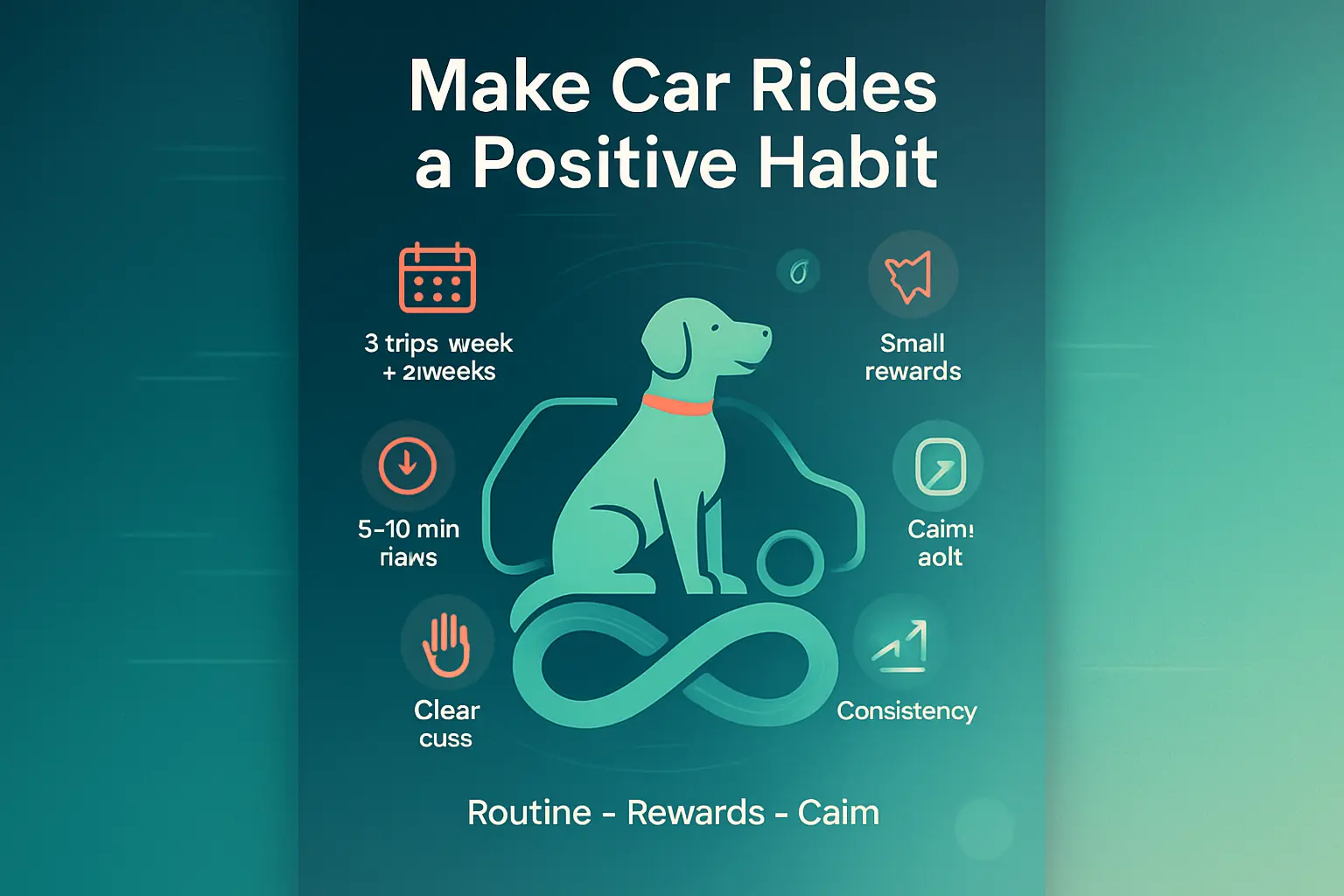
Consistency helps a dog keep progress. After reducing fear, owners must build predictable, rewarding habits that link the car to good outcomes. Small, frequent reinforcements prevent setbacks and make future training easier. Use obvious cues, short practice sessions, and gradual increases in duration and challenge.
Regular short, fun trips and varied destinations
Schedule brief drives that end at enjoyable places: a quiet park, a friend’s yard, or a sniff walk. Start with five- to ten-minute rides and reward calmly on exit. Vary destinations so the dog learns the car leads to multiple positive outcomes, not only vet visits. For motion-sensitive dogs, combine these trips with the strategies from how to make car rides enjoyable for your motion‑sick pup before increasing trip length.
Clear cues, consistent routines, and calm exits on arrival
Use a single verbal cue for loading and one cue for “all done.” Keep pre-ride routines identical: leash on, harness clipped, a short wait, then the cue and entry. Exit quietly and reward once the dog is settled on solid ground. Avoid celebratory chaos at arrival; calm exits reinforce that car travel brings normal, safe outcomes rather than high arousal.
Puppy exposure and long‑term maintenance practices
Puppies benefit from early, positive car exposure with supervised short rides. For adult dogs, schedule maintenance rides—one or two short trips per week—so skills don’t fade. Record progress, adjust rewards, and consult a trainer or vet if avoidance returns. A simple CTA: try three short, varied trips per week for four weeks and note changes in loading speed and body language.
Troubleshooting common setbacks and when to get professional help
When following the guidance in 8 Reasons Your Dog Is Refusing to Get Into the Car (and What to Do), owners often hit predictable setbacks. Troubleshooting focuses on identifying the cause, tracking progress, and choosing the right next step. Keep training sessions short and consistent. Record simple metrics: retries per day, success rate, and the dog’s stress signals. Use these to decide whether to continue a plan, modify it, or seek help.
Typical timelines, common plateaus, and how to adjust training
Most dogs show measurable improvement in two to six weeks with daily, low-pressure practice. Plateaus commonly appear around week three. When progress stalls, change one variable at a time: shorten sessions, swap rewards, vary loading locations, or add a low-distraction step. If a dog regresses after a holiday or illness, restart from earlier steps rather than pushing ahead. Keep notes and celebrate small wins.
Signs you should consult a certified behaviorist or trainer
Seek a certified behaviorist when fear escalates into aggression, repeated refusal persists after six to eight weeks, or the dog shows intense panic. Also consult if safety becomes an issue when loading. A professional can create a behavior modification plan and recommend desensitization or counter-conditioning tailored to the dog’s triggers. For practical calming strategies, see 9 natural ways to remedy your dog’s travel anxiety.
Situations that may require medical intervention or ongoing meds
Medical causes include vestibular disorders, arthritis, ear pain, or motion sickness. If the dog yelps when entering the car, limps, or vomits during short rides, arrange a vet exam. A veterinarian can run diagnostics and discuss short-term meds or ongoing prescriptions for anxiety. When medication is recommended, combine it with a behavior plan for best results. If unsure, call a vet for triage or to schedule an evaluation.
Summary
8 Reasons Your Dog Is Refusing to Get Into the Car (and What to Do) pinpoints the most common causes—motion sickness, past negative associations, anxiety, pain, over‑excitement, multi‑pet conflict, low experience, and mobility limits—and shows how to address each with clear, step‑by‑step solutions. It walks readers through a quick assessment to rule out injury, distinguish sickness from anxiety, and identify environmental triggers that make loading hard.
From a structured desensitization and counterconditioning plan to immediate, low‑pressure tactics, the guide covers practical tools, setup tweaks, and safety equipment that make loading easier and rides calmer. It also explains when veterinary diagnostics or a certified behaviorist’s help is warranted, plus how to prevent relapse with consistent routines and short, positive trips.
Key Takeaways
- Diagnose first: Observe behavior near a parked car, check recent changes, and inspect the vehicle; rule out pain or inner‑ear issues before training.
- Watch the signals: Drooling and vomiting suggest motion sickness; trembling and escape attempts point to anxiety; stiffness or limping indicate pain.
- Train in tiny steps: Use 5–10 minute sessions, start at a safe distance, pair the car with high‑value rewards, add engine sounds, then short drives; step back if stress appears.
- Use smart gear: Ramps or steps, non‑slip mats, well‑fitted crates or crash‑tested harnesses reduce fear and physical strain; manage multi‑dog loading one at a time.
- Ease motion sickness: Improve ventilation and horizon view, avoid large meals 2–4 hours before travel, secure the dog to limit bounce, and ask a vet about anti‑nausea options.
- Prevent setbacks: Keep cues and routines consistent, schedule short fun trips to varied destinations, track progress, and consult a pro if progress stalls or safety is a concern.
FAQ
- What’s the quickest way to tell if refusal is medical or behavioral? Run calm home checks for pain, then compare behavior in a parked car versus during motion. Pain or neurologic signs call for a vet visit; distress only when moving suggests motion sickness.
- How should training start if the dog won’t go near the car? Begin at a safe distance where the dog stays relaxed, pair the car with high‑value treats, and gradually close the gap over several short sessions before asking for two‑paw steps at the threshold.
- What helps a motion‑sick dog during practice rides? Increase airflow, provide a horizon view, place the dog low and secure to reduce bounce, and avoid feeding 2–4 hours pre‑trip. Ask a veterinarian about anti‑emetics if signs persist.
- Why is forcing a dog into the car counterproductive? It strengthens fear, risks injury, and slows progress. Micro‑steps, ramps or steps, and reward‑based loading build lasting confidence instead.
- How can owners manage multiple dogs at the car? Load one at a time, use crates or partitions, assign a handler per dog when possible, and reward a calm entry order to prevent competition or guarding.


